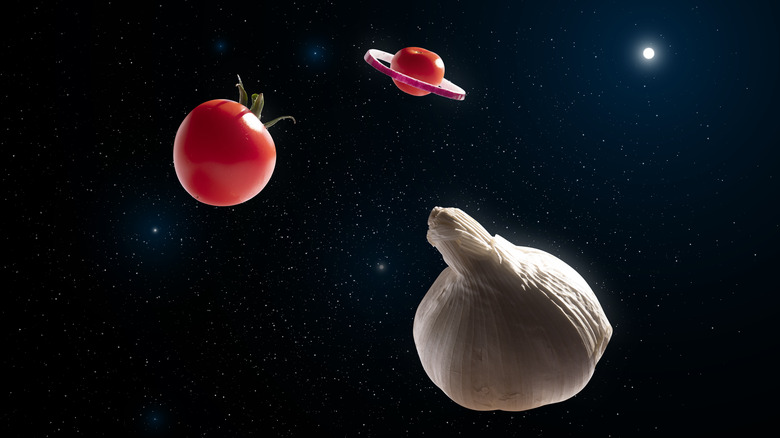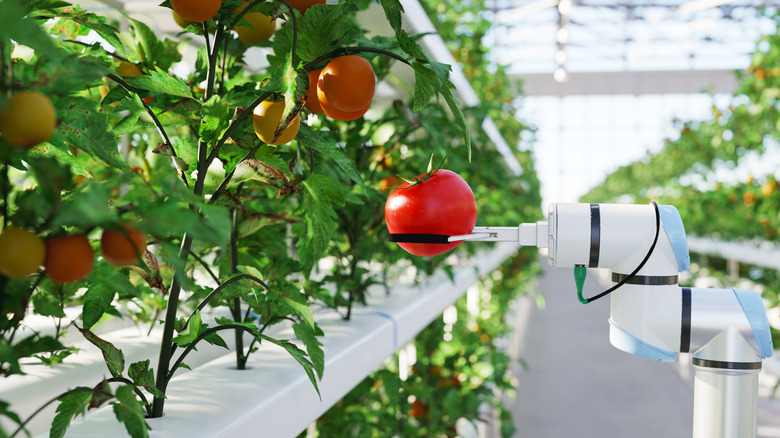The Scientific Reason Tomatoes Have Been Sent To Outer Space
It might not be the first thing foodies think of when daydreaming about their favorite meals, but food and science go hand in hand. From koji fermentation to the genetically engineered pink pineapple Del Monte produced in 2020, experimentation can be delicious. That's why thousands of tomato seeds have been sent to the International Space Station (ISS) as part of Tomatosphere, a free program that allows classrooms to study the effects of the intergalactic atmosphere on seed growth and development.
After their return from a 20 to 40-day voyage in space, these intrepid seeds are sent to schools. The Seed Foundation and the International Space Station Lab have been teaming up to make food science accessible, even for grade school-aged kiddos. Tomatosphere is a free, future-oriented program starring one of the oldest institutions in human history: Agriculture. It started in 2001, and, since then, over 3.3 million students across the U.S. and Canada have participated. Over 24,000 classrooms are involved yearly in the twice-annual program, which enjoys both spring and fall sessions.
Students receive two packets of tomato seeds: Ones that have been in space, and ones that haven't. Without knowing which packet is which, classrooms plant their gardens and monitor germination rates and development, while sensors track the temperature, pressure, and humidity surrounding the seeds as they grow. As the ISS National Lab puts it, Tomatosphere "uses the excitement of space exploration to teach the skills and processes of scientific experimentation and inquiry."
The future of food and a curiosity for learning
Tomatosphere technology isn't just for classroom learning. Most recently, the SpaceX Dragon spacecraft launched with Red Robin dwarf tomato seeds in tow during its 26th commercial resupply in late 2022. It returned to Earth on April 15, 2023, with a healthy crop of space-grown tomatoes aboard. Kirt Costello, chief scientist at NASA's International Space Station Program, told CNN that these botany experiments are crucial "to sustain the crew with not only nutrition but also to look at various types of plants as sources for nutrients that we would be hard pressed to sustain on the long trips between distant destinations like Mars and so forth."
Like the children in classrooms, astronauts in the ISS's miniature greenhouse tested their tomato plants' temperatures, nutritional value, and flavor. They also studied how the tomatoes grew in a zero gravity environment, how much water they needed, tried different fertilizer techniques, and monitored them for microbial food safety. In a more psychological way, the astronauts also observed how gardening affected their moods and morale while in space.
As NASA wrote in a blog post (via The Independent), these findings could have broader applications beyond just space travel: "The hardware could be adapted for use on Earth to provide fresh produce for those without access to gardens and as horticultural therapy for older people and people with disabilities." Already, astronauts have successfully grown lettuce, radishes, and chili peppers aboard the International Space Station.

